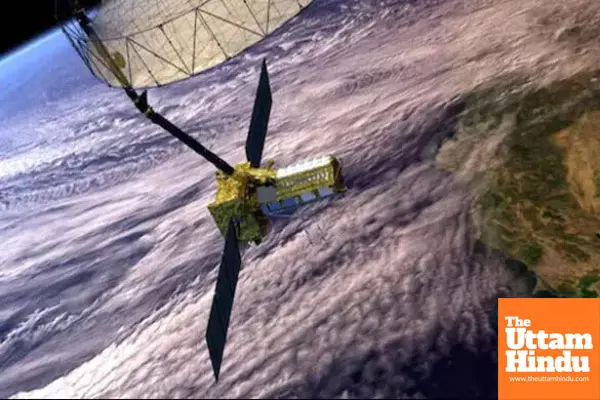ISRO-NASA's NISAR Satellite to Keep Watch on Earth's Every Movement, Launching Soon!

New Delhi (The Uttam Hindu): India is ready to take another historic leap in the field of space. The Indian Space Research Organization (ISRO) and the US space agency NASA will jointly launch their most ambitious mission 'NISAR' on July 30, 2025. NISAR, i.e. NASA-ISRO Synthetic Aperture Radar, is the world's most expensive and advanced earth-observation satellite that will monitor even the tiniest changes on the earth's surface 24×7.
This much-awaited satellite will be put into Earth orbit through a GSLV-F16 rocket from Satish Dhawan Space Center in Sriharikota. ISRO Chairman Dr. V. Narayanan recently confirmed this launch during an event in Telangana.
The biggest feature of NISAR is its dual frequency radar technology (L-band and S-band), which enables it to take very accurate pictures of the earth in all weather conditions, day or night, even amidst clouds and rain. It can capture even the slightest changes in the land as small as 1 centimeter. This unique ability will prove to be a milestone in predicting natural disasters like earthquakes, volcanoes, landslides and tsunamis. This technology can be a lifesaver, especially for sensitive areas like the Himalayas.
This mission is not just limited to disaster management but also has the potential to revolutionize the Indian agriculture sector. NISAR will provide accurate data on soil moisture, crop health and groundwater levels. This information will help farmers plan crops, better manage irrigation and prepare for situations like drought or floods. Apart from this, it will also study the effects of climate change, such as melting of glaciers and rise in sea level.
This mission is an excellent example of the growing space partnership between India and the US. ISRO has designed the S-band radar, satellite structure and launching vehicle (rocket) for this mission. At the same time, NASA has provided the L-band radar and a huge mesh antenna of 12 meters diameter. This mission not only demonstrates India's technological prowess and self-reliance, but also further strengthens its position as a major space power on the global stage.
To read this news in Hindi, Click here
